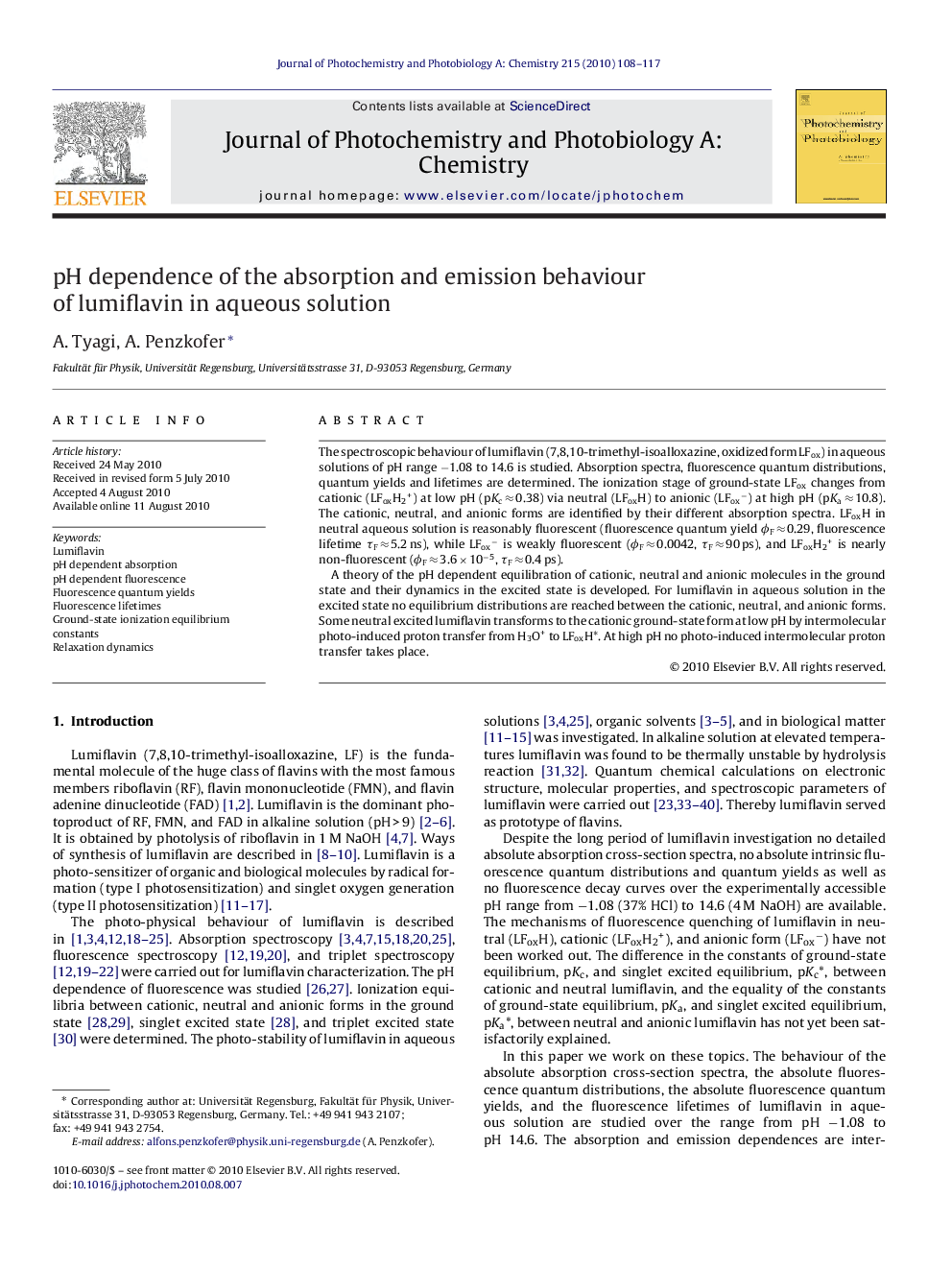| Article ID | Journal | Published Year | Pages | File Type |
|---|---|---|---|---|
| 27808 | Journal of Photochemistry and Photobiology A: Chemistry | 2010 | 10 Pages |
The spectroscopic behaviour of lumiflavin (7,8,10-trimethyl-isoalloxazine, oxidized form LFox) in aqueous solutions of pH range −1.08 to 14.6 is studied. Absorption spectra, fluorescence quantum distributions, quantum yields and lifetimes are determined. The ionization stage of ground-state LFox changes from cationic (LFoxH2+) at low pH (pKc ≈ 0.38) via neutral (LFoxH) to anionic (LFox−) at high pH (pKa ≈ 10.8). The cationic, neutral, and anionic forms are identified by their different absorption spectra. LFoxH in neutral aqueous solution is reasonably fluorescent (fluorescence quantum yield ϕF ≈ 0.29, fluorescence lifetime τF ≈ 5.2 ns), while LFox− is weakly fluorescent (ϕF ≈ 0.0042, τF ≈ 90 ps), and LFoxH2+ is nearly non-fluorescent (ϕF ≈ 3.6 × 10−5, τF ≈ 0.4 ps).A theory of the pH dependent equilibration of cationic, neutral and anionic molecules in the ground state and their dynamics in the excited state is developed. For lumiflavin in aqueous solution in the excited state no equilibrium distributions are reached between the cationic, neutral, and anionic forms. Some neutral excited lumiflavin transforms to the cationic ground-state form at low pH by intermolecular photo-induced proton transfer from H3O+ to LFoxH*. At high pH no photo-induced intermolecular proton transfer takes place.
